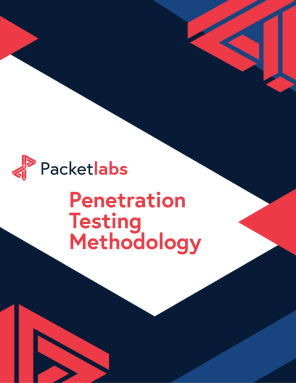What Are The Top Metrics to Measure After a Breach?
Would you like to learn more?
Download our Pentest Sourcing Guide to learn everything you need to know to successfully plan, scope, and execute your penetration testing projects.
When a cyber incident hits, teams prioritize the first 30 days of post-containment.
However, the real test begins afterwards... and can span years. This aftermath is where reputation, compliance, customer trust, and financial liability converge.
This article dives deep into the metrics that truly matter after a breach; namely what to measure, why it matters, how to act on it, and how it shapes your ability to prevent the next incident.
Let's get started:
1. Dwell Time: The Exposure Window
Dwell time refers to the length of time attackers remain in your environment, from initial access to detection or removal.
It’s more than a technical yardstick; rather, it’s a measure of how much freedom your adversaries had to explore your systems, move laterally, escalate privileges, and exfiltrate data.
What Are Statistics Around Dwell Time in 2025?
According to Mandiant’s M-Trends 2024, median dwell time has dropped to 10 days, down from 16 days in 2022.
Sophos’ X-Ops data shows a median dwell time of 8 days for all attacks in 2023, and 5 days for ransomware incidents.
Secureworks reports that in many ransomware incidents, attackers now push payloads in less than 24 hours from the point of initial access.
In contrast, non-ransomware dwell times have sometimes increased, hovering around 11–13 days in some studies.
Each additional day of undetected presence multiplies risk. The longer hackers roam, the more damage they do... persisting implants, deeper access, greater lateral reach, and more leverage during negotiations.
High dwell time points to gaps in detection, visibility, threat hunting, or monitoring. Effective defenders see dwell time shrink over time not because attacks slow, but because detection improves.
2. Key Mean Time Metrics
To move from reaction to control, organizations must measure how quickly (and thoroughly) teams perform at each stage of the incident lifecycle.
The following “Mean Time to…” metrics reveal process bottlenecks and guide accountability:
Mean Time to Detect (MTTD): Time from when an attack starts to when it is detected or flagged by the security stack.
Mean Time to Acknowledge (MTTA): Time between an alert firing and a human analyst (or automation) acting on it.
Mean Time to Contain (MTTC): Time to isolate or confine the breach so it cannot spread further.
Mean Time to Remediate / Recover (MTTR): Time to fully restore systems and apply fixes so normal operations resume.
These metrics translate technical efforts into operational performance. If MTTD is fast but MTTR is slow, your problem is remediation and patch pipelines—not detection. If containment drags, it points to the possibility that your organization's playbooks or cross-team coordination are in need of updates.
3. The Cost and Impact of Breaches
Once the urgency passes, executives demand to know: What did it cost us?
Organizations should be cataloging:
Scope and Scale
How many systems, users, or devices were affected?
How many records were exfiltrated?
Downtime and Disruption
How many hours or days of service interruption?
Which business lines were impacted?
Direct Financial Cost
Internal costs: staff time, overtime, IR contractors, legal, PR
External costs: fines, settlements, regulatory penalties, third-party vendor costs
Has your breach lifecycle exceeded 200 days? Breaches that last longer cost significantly more. In 2024, organizations with lifecycles over 200 days averaged USD 5.46 million in cost, versus lower averages for shorter lifecycles
Brand and Customer Impact
Account losses, cancellations, churn
Media backlash, social media damage, reputational fallout
Regulatory and Legal Exposure
Missed disclosure or reporting deadlines
Investigations or litigation
Fines reflective of severity and negligence
4. Resilience and Recovery
A true test of security is not surviving one breach, but emerging better. These metrics reflect how well you heal, learn, and improve.
Restoration Time
Time from breach containment to full operational baseline
Recurring Issues Rate
Percentage of vulnerabilities that reappear or resurface
Root Cause Closure
Percent of underlying architectural or process flaws that get fully resolved (not just patched)
Team Impact
Overtime hours, staff burnout, attrition
Number of fatigue-related errors, stress metrics, or retention challenges
Post-Incident Implementation Rate
Ratio of lessons learned to actual action: how many post-mortem recommendations were adopted within 90 days
How many new process changes, architectural upgrades, or controls were implemented
By tracking these, you avoid “patch and forget” mentality. You force the organization to evolve.
5. Benchmarking & Trend Analysis
To know if you’re improving, you need context—both historical and comparative.
Trending metrics to track over time include, but are not limited to:
Dwell time year over year
Average cost per incident
Number of major incidents per year
Internal vs. external Incident origin ratios
Rate of previously remediated issue reappearance
Peer benchmarking
Compare your data to industry averages and reports
Use benchmarks like IBM Reports
Understand where you stack up vs. peers in telecom, finance, etc.
6. From Metrics to Narrative: Communicating Effectively
Metrics are powerful only when they tell a clear story. Each audience demands a different lens:
Executives and Board:
Frame metrics in dollars, risk reduction, and reputation protection
Show how reducing dwell time or MTTR directly correlates to lower breach cost
Regulators and Auditors:
Emphasize timeliness of detection & containment, evidence preservation, and legal compliance
Security and Engineering Teams:
Focus on measurable improvements, such as: “We cut MTTR by 35% this quarter”
Demonstrate which process or tooling changes moved the needle
Customers & Stakeholders:
Emphasize transparency, accountability, and how this ensures stronger protection in the future
7. The Future of Post-Breach Metrics
Emerging trends mean your metrics must evolve:
AI & behavioral metrics: spotting anomalies faster, predicting dwell time
Real-time metric feedback: dashboards that update as a breach unfolds
Regulatory metric disclosure: governments and compliance regimes may begin requiring post-breach metrics in incident reports
Security scorecards: blending internal metrics with external security rating services
Conclusion
Breaches are inevitable. But failing to measure your response is unforgivable.
From dwell time to recovery metrics, every number you track becomes a lever to get better, faster. The organizations that emerge from breaches stronger and more cyber-aware are the ones that turn metrics into storytelling, accountability, and continuous improvement.
Don’t settle for “we got through it.” Use metrics to showcase to stakeholders and insurers how your team learned, improved, and are ready for the next challenge.
Contact Us
Speak with an Account Executive
Interested in Pentesting?

Penetration Testing Methodology
Our Penetration Security Testing methodology is derived from the SANS Pentest Methodology, the MITRE ATT&CK framework, and the NIST SP800-115 to uncover security gaps.
Download Methodology
Pentest Sourcing Guide
Download our Pentest Sourcing Guide to learn everything you need to know to successfully plan, scope, and execute your penetration testing projects.
Download Guide










